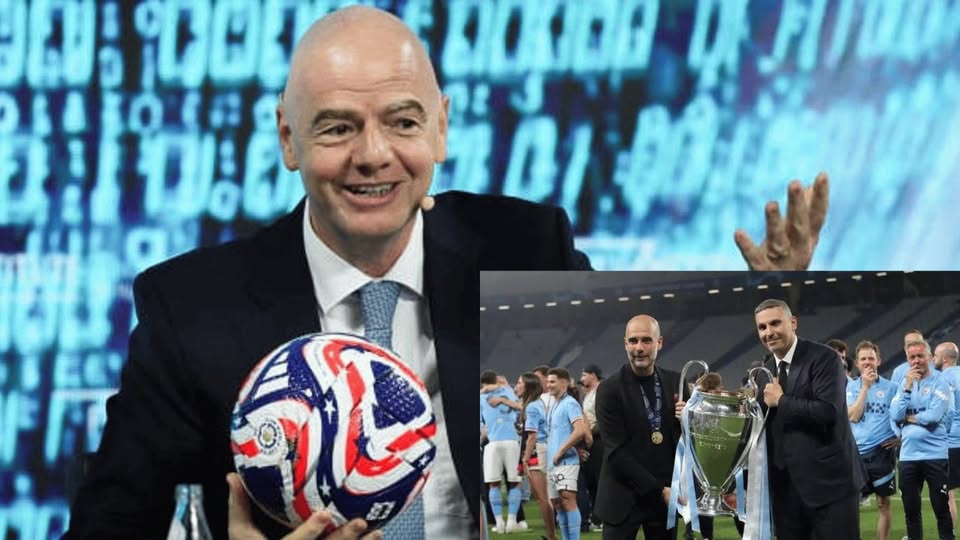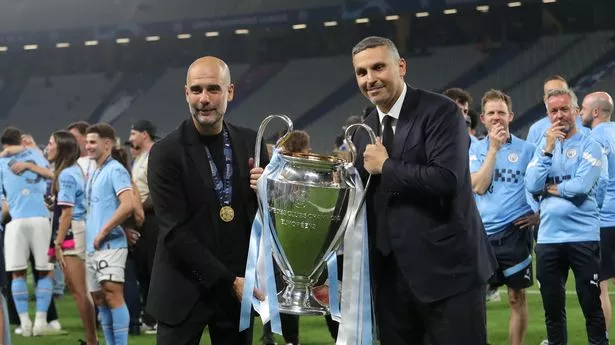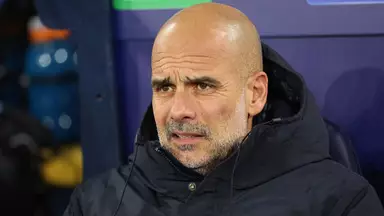Man City could land £70m jackpot as part of huge Club World Cup prize

The landscape of international club football is set to undergo a dramatic transformation in 2025, as FIFA’s expanded Club World Cup promises to deliver unprecedented financial rewards and global spectacle. At the heart of this revolution are Chelsea and Manchester City, the two English representatives who stand to benefit significantly from what is being hailed as one of the most lucrative tournaments in football history.
The Financial Windfall: A Game-Changing Prize Pool
The numbers surrounding the 2025 FIFA Club World Cup are staggering by any measure. With an estimated total prize fund of $2 billion, the tournament represents FIFA’s most ambitious attempt to create a truly global club competition that rivals the financial appeal of domestic leagues and continental championships. This massive investment reflects the organization’s vision of establishing a premier international club tournament that can capture worldwide attention and generate substantial revenue for all stakeholders involved.
Chelsea and Manchester City are positioned to receive between $60 million and $90 million each (£46 million to £70 million), figures that dwarf previous international tournament payouts and could significantly impact the financial strategies of both clubs. These substantial sums are not merely participation fees but represent a carefully structured reward system designed to incentivize both attendance and performance at the highest level.
The distribution mechanism for this enormous prize pool reveals FIFA’s sophisticated approach to balancing participation rewards with performance-based incentives. Of the $1 billion allocated directly to participating clubs, approximately $575 million will be distributed based on participation alone, ensuring that every qualifying team receives a substantial base payment regardless of their tournament performance. The remaining $465 million will be awarded based on sporting achievement, creating a competitive structure that rewards excellence while providing financial security for all participants.
Qualification Stories: The Path to Glory
The journey to the 2025 Club World Cup for Chelsea and Manchester City represents the culmination of recent European triumphs that have established both clubs among the continent’s elite. Chelsea’s qualification stems from their memorable 2021 UEFA Champions League victory, a campaign that saw them overcome formidable opponents under Thomas Tuchel’s tactical guidance. The London club’s triumph was particularly significant as it marked their return to European glory after a period of relative continental disappointment.
Manchester City’s path to the tournament follows their dominant 2023 Champions League campaign, which finally delivered the trophy that had long eluded Pep Guardiola’s expensively assembled squad. Their qualification represents the fulfillment of years of investment and strategic planning, with the Club World Cup offering an opportunity to add another prestigious trophy to their growing collection.
The significance of these qualifications extends beyond mere tournament participation. Both clubs have invested heavily in infrastructure, player development, and coaching staff with the explicit goal of competing at the highest international level. The Club World Cup represents validation of these investments and provides a platform to showcase their progress against the world’s best teams.
Tournament Structure and Global Representation
The expanded format of the 2025 Club World Cup represents a fundamental shift in FIFA’s approach to international club competition. The increase from the previous format to 32 teams reflects a desire to create a more inclusive tournament that represents football’s global diversity while maintaining competitive integrity. This expansion allows for greater representation from confederations traditionally underrepresented in international club competitions, creating opportunities for emerging football nations to showcase their talent on the world stage.
The tournament’s structure mirrors that of the FIFA World Cup, with group stages followed by knockout rounds leading to a final. This familiar format ensures that fans worldwide can easily follow the competition while providing sufficient matches to justify the substantial financial investment. The month-long duration, running from June 14 to July 13, 2025, allows for comprehensive coverage and maximum exposure for participating teams and their sponsors.
Group Stage Drama: Early Challenges Await
The draw for the 2025 Club World Cup has created intriguing group stage scenarios for both English representatives. Manchester City finds themselves in a challenging group alongside Italian giants Juventus, a matchup that promises to be one of the group stage’s most compelling encounters. Juventus brings a rich history of international competition and tactical sophistication that will test City’s ability to adapt their Premier League dominance to the international stage.
The inclusion of Moroccan side Wydad and UAE’s Al-Ain adds continental diversity to City’s group, presenting different tactical challenges and playing styles that could prove crucial in determining group standings. These matchups offer City the opportunity to demonstrate their tactical flexibility while providing opponents with the chance to test themselves against one of Europe’s most successful recent teams.
Chelsea’s group presents its own unique challenges, with Mexican club Leon offering a different style of play from what the London club typically encounters in European competition. The inclusion of Brazilian powerhouse Flamengo adds South American flair to the group, bringing technical skill and attacking creativity that could trouble Chelsea’s defensive organization. Tunisian side Esperance de Tunis completes the group, representing African football and adding another dimension to Chelsea’s tournament preparation requirements.
Scheduling Conflicts and Domestic Concerns
The timing of the 2025 Club World Cup has created significant tension between FIFA’s international ambitions and domestic league requirements. The tournament’s summer scheduling directly conflicts with traditional pre-season preparation periods, creating logistical challenges for participating clubs and their domestic leagues.
Premier League chief football officer Tony Scholes has been particularly vocal about these concerns, ruling out any possibility of delaying the 2025-26 season start to accommodate Club World Cup participants. This position reflects the Premier League’s broader concerns about fixture congestion and player welfare, issues that have become increasingly prominent as the football calendar becomes more crowded.
The impact extends beyond mere scheduling inconvenience. Players participating in the Club World Cup will face an extended season with minimal rest, potentially affecting their performance in the following domestic campaign. This creates a complex balancing act for clubs, who must weigh the financial and prestige benefits of the tournament against potential competitive disadvantages in their domestic leagues.
For Chelsea and Manchester City, these concerns are particularly acute given their ambitions in multiple competitions. Both clubs typically compete in the Premier League, domestic cup competitions, and European tournaments, creating already demanding schedules that the Club World Cup will further complicate.
Financial Distribution and Solidarity Payments
Beyond the headline figures for participating clubs, the Club World Cup’s financial structure includes provisions for broader football development through solidarity payments. An estimated $150 million is earmarked for clubs that do not qualify for the tournament, with hopes that this figure could increase to $250 million. These payments represent FIFA’s acknowledgment that the tournament’s benefits should extend beyond the 32 participating teams.
The solidarity payment structure addresses concerns about the tournament’s impact on competitive balance within domestic leagues and confederations. By providing financial support to non-participating clubs, FIFA aims to prevent the Club World Cup from becoming a mechanism that widens the gap between elite and developing football institutions.
The operational costs of the tournament, projected at approximately $850 million, reflect the scale and ambition of FIFA’s vision. These costs cover everything from venue preparation and security to broadcasting infrastructure and marketing campaigns designed to establish the Club World Cup as a premier global sporting event.
Venue Selection and American Market Penetration
The decision to host the 2025 Club World Cup in the United States represents a strategic move to penetrate one of the world’s largest sports markets. The tournament will kick off at Hard Rock Stadium with a match between Inter Miami and Al-Ahly, a choice that reflects FIFA’s desire to maximize American audience engagement from the opening game.
The selection of MetLife Stadium in New Jersey for the final demonstrates FIFA’s commitment to showcasing the tournament in world-class venues capable of delivering a premium experience for players, fans, and global television audiences. These venue choices also reflect the growing infrastructure investment in American soccer facilities, supporting the sport’s continued growth in the United States.
The American setting provides unique opportunities for global marketing and commercial partnerships, with the tournament serving as a testing ground for FIFA’s strategies ahead of the 2026 World Cup, which will also be hosted in North America.
Historical Context and Future Implications
The 2025 Club World Cup represents the culmination of FIFA’s long-standing ambition to create a truly global club competition. Previous iterations of the tournament, while prestigious, lacked the financial incentives and comprehensive format necessary to capture sustained global attention. The expanded format and massive prize pool mark a new chapter in international club football.
For Chelsea and Manchester City, participation offers an opportunity to add to their growing trophy collections while testing themselves against diverse international opposition. Both clubs have invested heavily in becoming global brands, and the Club World Cup provides a platform to showcase their development to worldwide audiences.
The tournament’s success could influence future international competition formats, potentially leading to regular expanded tournaments that challenge the traditional supremacy of continental championships. This evolution could reshape how clubs approach squad building and strategic planning, with international tournament success becoming an increasingly important factor in attracting top talent and commercial partnerships.
Conclusion: A New Era in Club Football
The 2025 FIFA Club World Cup represents more than just another tournament; it signals a fundamental shift in how international club football is organized and monetized. For Chelsea and Manchester City, the financial rewards and global exposure offer compelling reasons to embrace the additional fixture burden and scheduling complications.
The tournament’s success will be measured not only by the quality of football on display but also by its ability to establish a sustainable model for international club competition. If successful, the Club World Cup could become a regular fixture in the football calendar, fundamentally altering how clubs approach squad management, financial planning, and global marketing strategies.
As the June 2025 kick-off approaches, the football world watches with keen interest to see whether FIFA’s ambitious vision can deliver on its promises of financial reward, competitive excellence, and global engagement. For Chelsea and Manchester City, the stakes extend far beyond the substantial prize money – they have the opportunity to help define the future of international club football while adding another chapter to their own success stories.
The expanded Club World Cup represents FIFA’s bold bet on the future of club football, and its success or failure will have lasting implications for how international competitions are structured and valued in the years to come.














